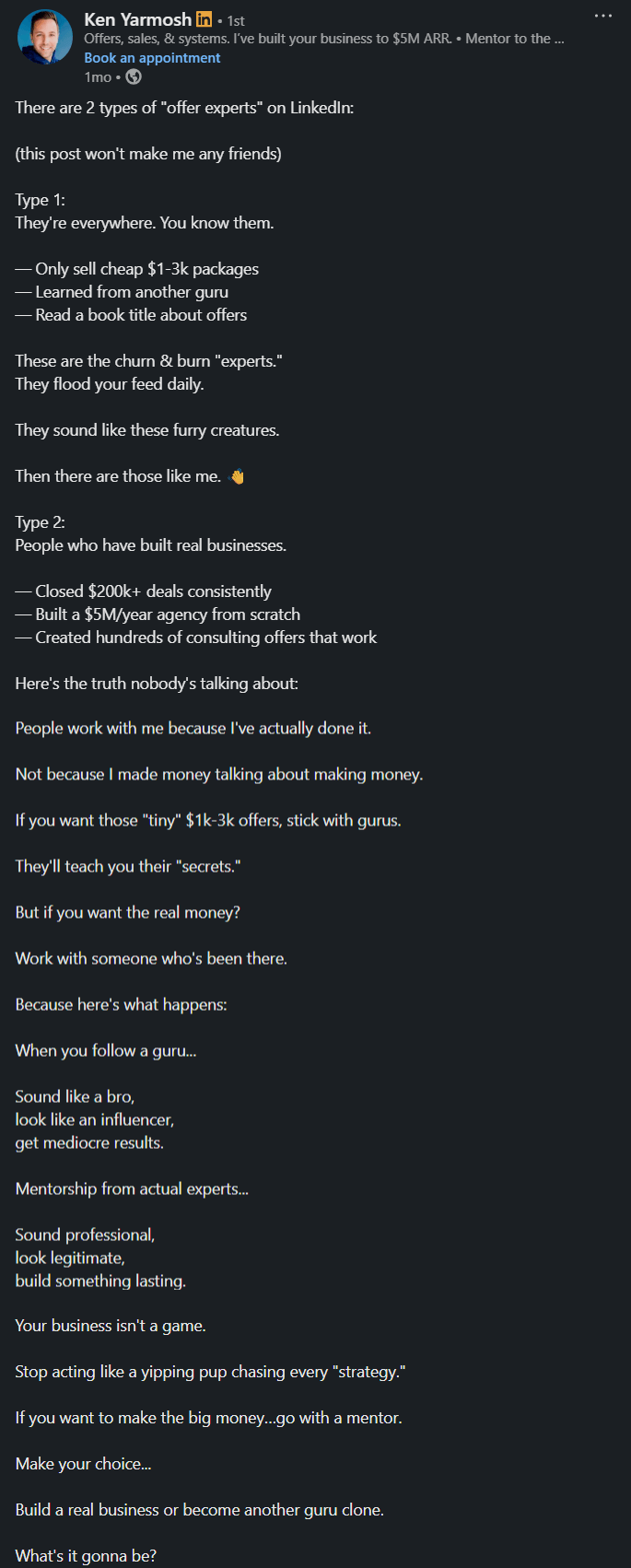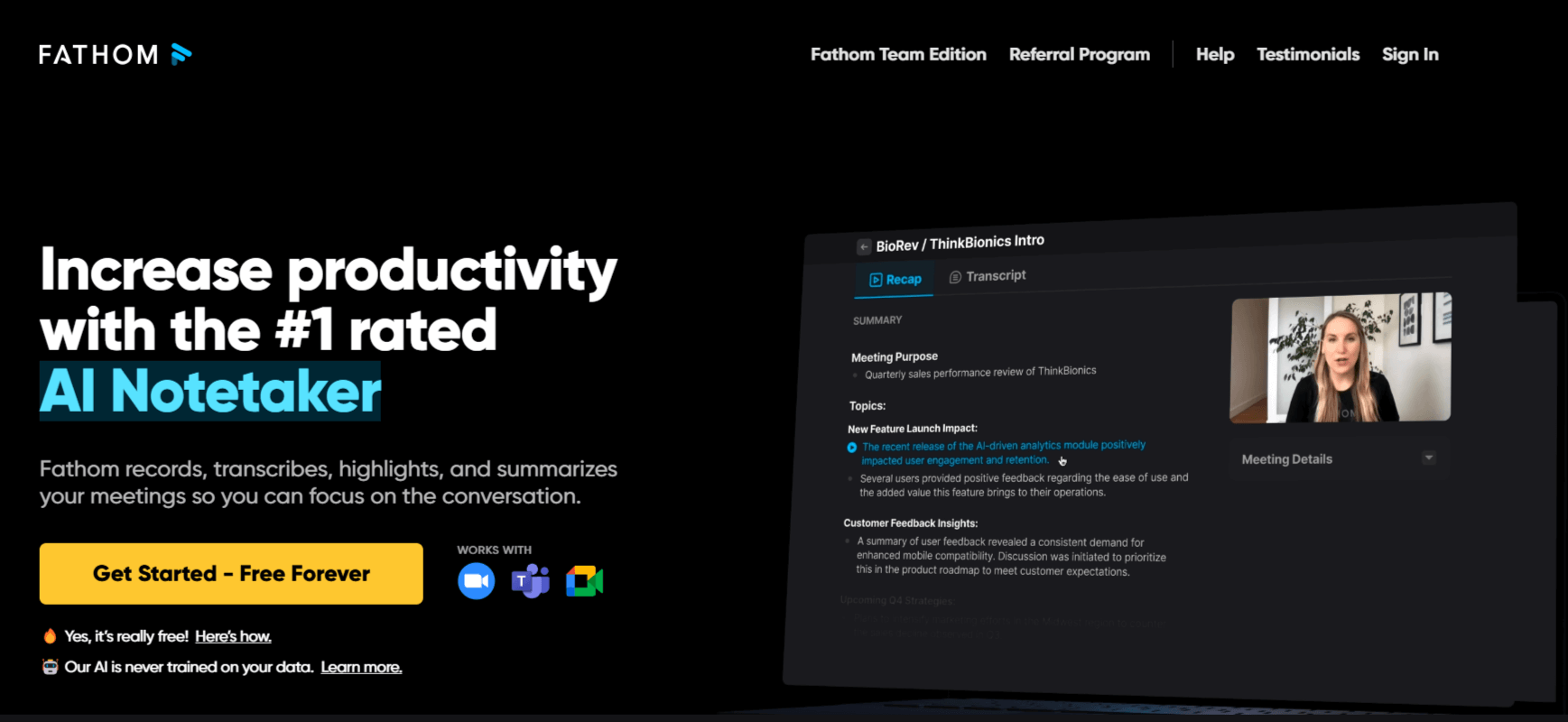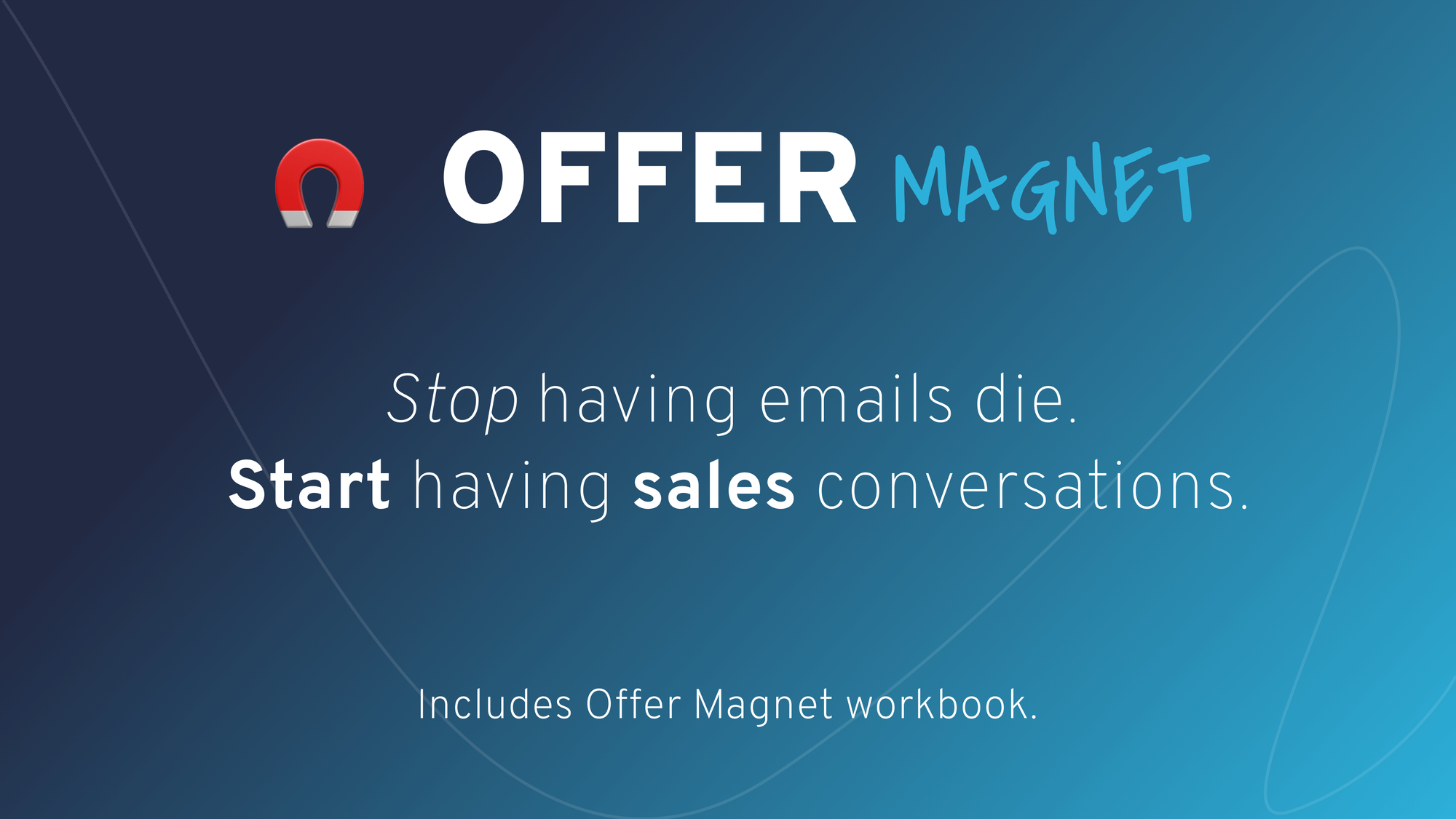🚀 TL;DR
- High-ticket lead generation (for premium services) demands a shift from “volume + low friction” to “trust, clarity, and authority.”
- You must *narrow your niche*, clarify who you serve (and who you don't), and lead with strategic offers, not just deliverables. (Ken uses 12 specific strategies.)
- Authority-building content, signature frameworks, polarizing POVs, and using pre-call filters (application forms, quizzes) help qualify prospects early.
- “Proof over promises” is more critical in high-ticket sales — show clients real transformations, not vague benefits.
- The path to “yes” must be simple. Avoid complexity in funnels; make the next step obvious and frictionless.
Most consultants think their growth problem is about not having enough leads.
The real problem is attracting the wrong leads.
I've watched talented consultants and founders burn through months of effort chasing prospects who ghost them, haggle over price, or waste hours in discovery calls that never convert. Meanwhile, other consultants with similar skills command premium rates and have waiting lists.
The difference isn't luck or connections. It's understanding that high-ticket lead generation works completely differently than what most people assume.
Low-ticket services compete on price and convenience. High-ticket services compete on trust and outcomes. When someone's about to invest $10,000+ in your expertise, they're not comparison shopping on Upwork. They're looking for someone who understands their world and can guide them to results.
That's why traditional lead generation tactics fall flat in the high-ticket space.
In this guide, I’ll give you 12 tips for high ticket lead generation so that you can close more deals faster—and grow your business.
The difference between low-ticket and high-ticket services
Before diving into tactics, you need to understand why high-ticket lead generation requires a completely different approach.
Low-ticket buyers make fast decisions based on price and features. They're solving immediate, tactical problems. A $500 website audit gets purchased because it's affordable and the deliverable is clear.
High-ticket buyers make slow, strategic decisions based on trust and outcomes. They're solving complex business challenges that could make or break their goals. A $25,000 revenue optimization engagement gets purchased because the buyer believes you can deliver transformational results.
This fundamental difference changes everything about how you attract and convert leads.
Low-ticket services compete on accessibility. You need volume, fast conversions, and streamlined delivery. Your marketing focuses on features, benefits, and social proof from lots of smaller wins.
High-ticket services compete on authority. You need fewer, better-qualified prospects who understand the value of what you deliver. Your marketing focuses on strategic insights, business impact, and proof of major transformations.
When someone's considering a $50,000 investment in your expertise, they're not browsing your website at 2 AM or making an impulse purchase. They're researching you for weeks, reading your content, watching how you think, and evaluating whether you understand their specific challenges.
This means your entire lead generation approach must shift from broadcasting to building long-term relationships.
The clients who pay the most aren't looking for someone to execute. They're looking for someone to advise, steer, and take ownership of the outcome.
Everything changes when you position yourself as that strategic advisor rather than a tactical service provider. Your inbound leads improve. Your conversations become more strategic. Your pricing power increases dramatically.
However, it requires patience and a completely different marketing mindset than most consultants use.
12 strategies to generate high-ticket leads
These aren't generic lead-generation tactics. They're specific approaches that attract serious buyers who already see you as an authority.
Each high-ticket sales strategy builds on the others. The goal isn't to implement all 12 at once but to choose the ones that align with your strengths and systematically build your authority in your market.
1. Clarify who you're for (and not for)
Growth is subtraction.
Most consultants try to appeal to everyone and end up resonating with no one. They broadly describe their ideal client as "growing businesses" or "marketing teams."
High-ticket buyers don't hire generalists. They hire specialists who deeply understand their specific world.
Define your niche with surgical precision. Instead of "I help businesses grow," try "I help B2B SaaS companies between $5M-$50M ARR optimize their sales process to reduce churn and increase expansion revenue."
The more specific you get, the more qualified your leads become.
But specificity isn't enough. You also need to be clear about who you don't work with.
Say who it's not for just as loudly as who it's for. When prospects see you turning away business that doesn't fit, they understand you're selective. This selectivity signals expertise and increases perceived value.
For example: "This framework doesn't work for startups under $1M ARR, companies without dedicated sales teams, or businesses that aren't ready to invest in systematic change."
These exclusions do two things. They prevent unqualified prospects from wasting your time. And they make qualified prospects feel special about meeting your criteria.
If you're getting on calls with people who aren't the right client for your service, it's not a lead problem. It's a framing problem. You didn't set the tone before they showed up.
2. Lead with a strategic offer, not tactics
When you speak like an advisor, your inbound leads change. You attract people who want brains, not hands.
Most consultants position themselves around what they do rather than the outcomes they create. They talk about "social media management" instead of "revenue growth through strategic content." They offer "website optimization" instead of "conversion systems that reduce customer acquisition costs."
High-ticket buyers care about business impact, not deliverables.
Transform your positioning from tactical to strategic by focusing on three elements:
- The business problem you solve. What keeps your ideal clients awake at night? Revenue stagnation? Operational inefficiency? Competitive threats?
- The strategic outcome you deliver. How does their business improve after working with you? Specific revenue increases? Cost reductions? Market expansion?
- Your unique approach to getting there. What's your methodology that others don't have? What frameworks do you use that create predictable results?
For instance, instead of offering "marketing consulting," position yourself around "The Revenue Acceleration Framework that helps B2B service companies systematically increase deal size and close rates without adding sales staff."
This positioning immediately communicates several things. You work with B2B service companies specifically. You focus on revenue growth, not just marketing activities. You have a systematic approach with a name. You deliver results without requiring them to hire more people.
That's the language of a strategic advisor, not a service provider.
Position yourself around outcomes and business impact. High-ticket clients want strategy, not task lists.
3. Build a "results-first" personal brand
Share client wins, frameworks, and strategic insights. Let people associate your name with results, not services.
Most consultants build their personal brand around their credentials or processes. They talk about their certifications, years of experience, or step-by-step methodology.
High-ticket prospects care more about proof than process.
Build your brand around the transformations you create. Share specific client results with context. Instead of "helped a client increase revenue," share "helped a $12M logistics company reduce customer churn from 23% to 8% in six months using our retention framework."
The specificity creates credibility. The context helps prospects visualize similar results for their situation.
Also, develop signature frameworks that become associated with your approach. Give your methodologies names and share how they work. This intellectual property becomes part of your brand and differentiates you from competitors. For example, I have multiple frameworks like:
- Scalable Service Offers
- Pitch to Win
- Uncoaching
This makes it easier for my high-value clients to remember the specific offer they want to go with—and why.
4. Use authority-building content
Break down what's not working in your industry and how to fix it. Use teardown posts, short videos, or public audits to showcase your thinking.
Generic educational content attracts generic leads. Authority-building content attracts serious buyers.
The difference is depth and specificity. Instead of "5 Marketing Tips for Small Business," create "Why B2B SaaS Companies Waste 60% of Their Marketing Budget (and the 3-Step Fix)."
Use these content formats to demonstrate expertise:
- Industry teardowns: Analyze what competitors or public companies are doing wrong and explain better approaches.
- Strategy audits: Review public marketing, websites, or campaigns and provide specific improvement recommendations.
- Contrarian takes: Challenge conventional wisdom in your industry with data-backed alternatives.
- Framework explanations: Break down your proprietary methodologies and show how they solve specific problems.

This content serves multiple purposes. It demonstrates your analytical thinking. It shows you understand industry challenges. It positions you as someone who can spot problems others miss.
5. Use polarizing point-of-view content
Leads trust the clearest voice, not the loudest one.
Boldly state your take. High-ticket leads resonate with conviction and clarity.
Most consultants try to avoid controversy by staying neutral on industry debates. This makes them forgettable.
High-ticket buyers want to work with people with strong opinions backed by experience. They're looking for advisors who can make tough calls and stand behind their recommendations.
Develop clear positions on the key debates in your industry. What conventional approaches do you disagree with? What "best practices" have you seen fail? What trends do you think are overrated or underrated?

Share these viewpoints consistently. You'll repel some potential clients but attract others who share your perspective or respect your conviction.
The goal isn't to be controversial for attention. It's important to be clear about your way of thinking so the right clients can find you.
6. Mirror your ideal client's language
If your copy sounds like them, it will sell to them. Use their exact words for pains, outcomes, and goals.
Most consultants describe client problems using their own professional language. They talk about "optimization" when clients say "things are broken." They mention "strategic alignment" when clients say, "Everyone's confused."
This disconnect creates friction in your marketing.
Study how your ideal clients talk about their challenges. Listen to their language in sales calls, read their LinkedIn posts, and review their job descriptions. I use Fathom to record and review my sales and client calls.

Capture their exact phrases for describing problems, goals, and desired outcomes. Then, use this language in your marketing copy.
When prospects see their own words reflected back to them, they feel understood. This understanding is the foundation of trust in high-ticket sales.
7. Create offer magnets
Build a high-value asset that teaches something unique. Gate it to collect warm leads—but make sure it's from your personal playbook.
Generic lead magnets attract generic leads. Your offer magnet should demonstrate the same level of thinking you bring to paid engagements.
Instead of "10 Marketing Tips," create something like "The Revenue Diagnostic Framework: How to Identify the 3 Bottlenecks Limiting Your Growth" with your actual assessment framework.
Created valuable content that prospects would pay for it but accessible enough to build trust before buying.

8. Name your process or intellectual property
When you give your ideas a name, you give them value.
Turn your methodology into a named framework. It creates perceived authority and productizes your expertise.
Instead of describing your approach generically, develop signature frameworks with memorable names. For example, I call my offers framework “Scalable Service Offers.”
When you name frameworks, they make your approach seem more substantial and systematic. They create intellectual property you can reference and build upon. They make you more memorable.
Prospects start thinking about hiring "the person with the Revenue Acceleration System" rather than "another marketing consultant."
9. Share proof over promises
Show them it's already happening for someone else.
Let results speak. Highlight transformations and wins—ideally with client context.
Social proof matters more in high-ticket sales because the stakes are higher. When someone's considering a $25,000 investment, they want to see evidence you've delivered similar results for similar clients.
Share specific results with enough context for prospects to evaluate relevance. Include the client's industry, size, challenge, your approach, timeline, and outcome.
"Helped increase conversion rates by 40%" means nothing. "Helped a $15M manufacturing company increase qualified leads by 127% in 90 days using our targeting framework" provides context prospects can evaluate.
10. Create pre-call filters
The sale starts before the calendar invite. Use application forms, quizzes, or videos that prospects must complete before booking.
You need to repel the wrong people just as much as you attract the right ones. High-ticket offers require high-friction qualification.
Instead of letting anyone book a call, create qualifying steps. Application forms that ask about budget, timeline, and specific challenges. Short videos explaining your approach and ideal client criteria. For instance, I use a system called Progressive Qualification to help prospects self-qualify or disqualify.
This friction serves two purposes. It prevents unqualified prospects from wasting your time. And it makes qualified prospects more invested in the conversation because they've already demonstrated interest.
When someone completes your pre-call requirements, they arrive more prepared and committed to the conversation.
11. Audit who's engaging
Watch for who's liking, commenting, or silently watching your content. These are warm leads—reach out with something tailored to what they engaged with. Most consultants focus only on direct responses to their content. They miss the warm prospects who engage quietly.
Pay attention to who consistently likes your posts, views your content, or visits your profile. These people are showing interest even if they're not commenting publicly.
Create a simple system to track engagement patterns. When you notice someone from your target market engaging regularly, reach out with a personalized message referencing what they've been engaging with.
"I noticed you've been following my content about revenue optimization. Are you dealing with similar challenges at [their company]?"
This approach feels natural rather than pushy because it's based on their demonstrated interest.
12. Make the path to 'yes' simple
Confusion kills deals.
Ensure your high-ticket sales funnel is tight: one message → one offer magnet → one call to action.
Complex funnels confuse prospects and create drop-off points. High-ticket buyers want clarity, not clever marketing sequences.
Design your lead generation process around simplicity. One clear message about who you help and how. One valuable resource that demonstrates your expertise. One clear next step for interested prospects.
Avoid multiple lead magnets, complicated email sequences, or unclear calls to action. The path from discovery to conversation should be obvious and frictionless. When prospects understand exactly what you do and how to work with you, qualified leads move forward quickly.
Stop chasing leads and start attracting clients
Most consultants get lead generation backward. They focus on volume instead of quality, tactics instead of positioning, and convincing instead of attracting.
High-ticket lead generation works differently because high-ticket buyers think differently.
They're not looking for the cheapest option or the fastest turnaround. They're looking for someone who understands their world, has solved similar problems, and can guide them to better outcomes.
You don't grow into high-ticket deals by getting better at sales. You grow into them by getting clearer on who you are for, what problem you solve, and why it matters.
The strategies in this guide aren't quick fixes. They're systematic approaches to building the kind of authority that attracts serious buyers. If you’re ready to start building a sustainable solo business, here’s a free system “on me” to help you:

